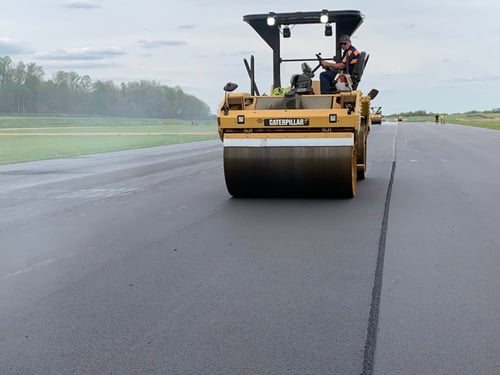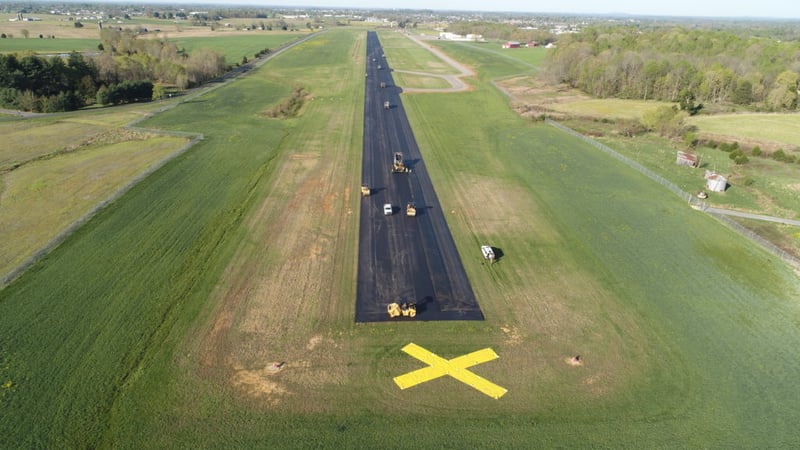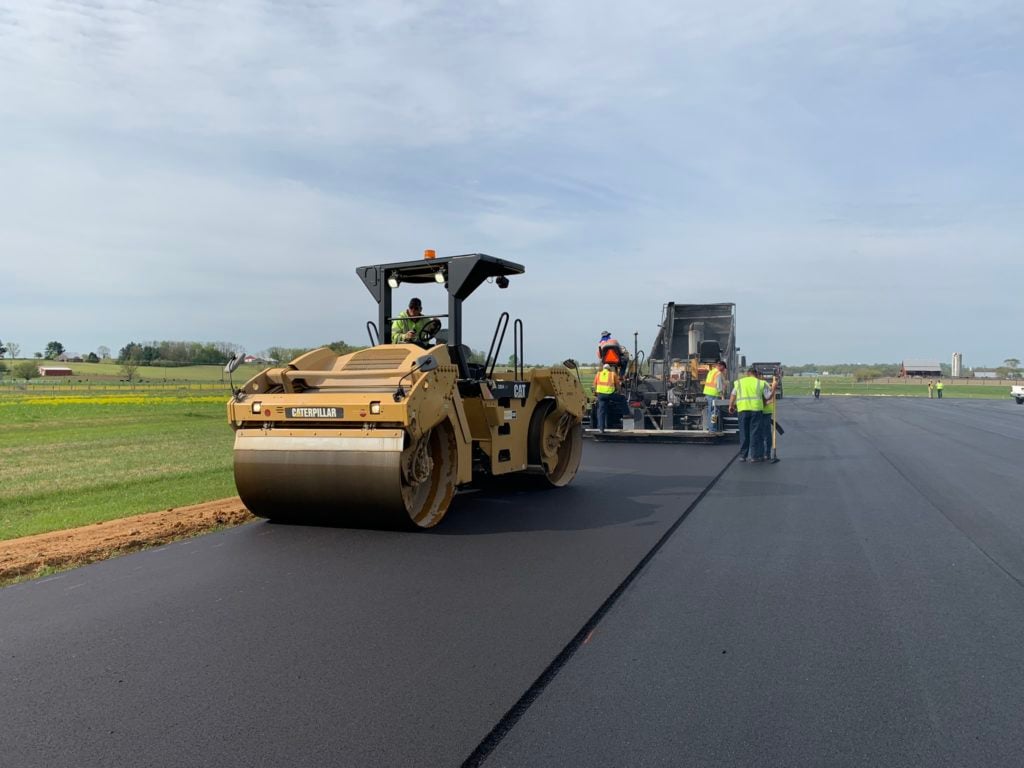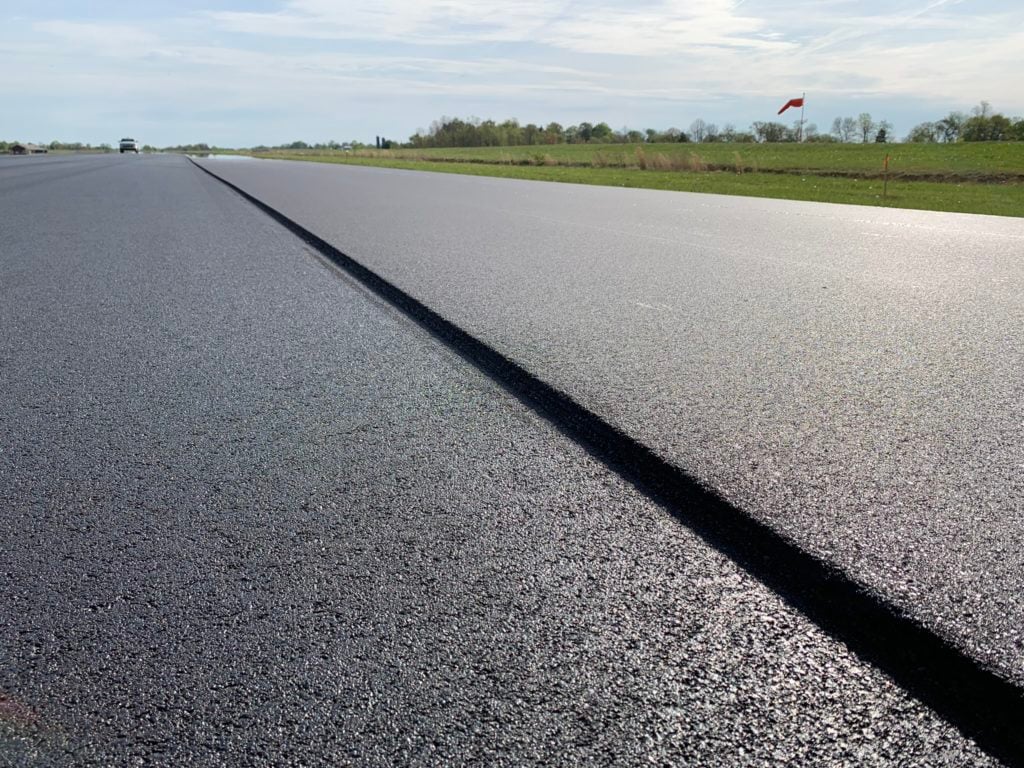A custom asphalt mix design utilizing ACE XP polymer fibers has given a general aviation airport the long-term solution it sought for a nagging pavement cracking problem. Initial results show the custom design, which combined both a binder layer and a surface layer reinforced with ACE XP, will exceed expectations by greatly reducing cracking potential.
The six-year-old runway pavement at Taylor County Airport in Kentucky was failing. Airport authorities called on Palmer Engineering to provide a desperately needed 15-year-plus solution to the pavement’s micro-cracking problem. Working with Haydon Materials, the team turned to an expert with long-standing experience in designing crack-resistant asphalt pavements.
 “Haydon Materials brought in Phil Blankenship from Blankenship Asphalt Tech & Training,” said Joe Dennis, Surface Tech’s chief technology officer for asphalt.
“Haydon Materials brought in Phil Blankenship from Blankenship Asphalt Tech & Training,” said Joe Dennis, Surface Tech’s chief technology officer for asphalt.
“The airport authorities were concerned that numerous cracks in the existing pavement could lead to failure, a common failure in airport pavements as aging occurs can create FOD — Flying Object Debris — causing a danger to the aircraft and potentially the traveling public.”
No milling was done on the runway pavement prior to re-paving. This meant the existing cracks would be exposed to the bottom of the binder layer and would ultimately reflect upward through the new pavement. The solution called for an inordinately crack resistant and resilient binder layer that either needed to be custom-designed, or an expensive two-dimensional geosynthetic rolled interlayer product.
“As a member of Surface-Tech’s Technical Advisory Committee, Phil is well versed on the capabilities of ACE XP, and he set about designing a completely new binder layer asphalt mix using it.”
Blankenship was able to deliver a design that Haydon could produce in its plant and pave with existing paving equipment. Using ACE XP in the new binder layer design gave Haydon Materials an effective crack resistant solution, while maintaining cost control for this demanding application.
The customized ACE XP mix achieved a new level of flexibility for the binder layer. The new binder layer design — a finely graded, highly asphalted crack resistant mixture — greatly reduced the potential for cracks to reflect upward from the base through the new pavement.
An ACE XP reinforced surface mix was also designed utilizing a higher-than-normal asphalt content to provide even greater crack resistance than a typical FAA asphalt mix design,
“The development of this unique combination of mix designs for the binder and surface layer is an exciting advancement for the paving industry that holds great promise for dramatically improving crack prevention,” said Dennis.
“With this new approach, contractors can also control the quality in both production and installation, as the new mix design is simply incorporated into the contractor’s production processes, thus eliminating third party contractors to install the 2-dimentional geosynthetic rolled interlayer product.”
For more information on ACE XP crack resistant designs, contact us.



